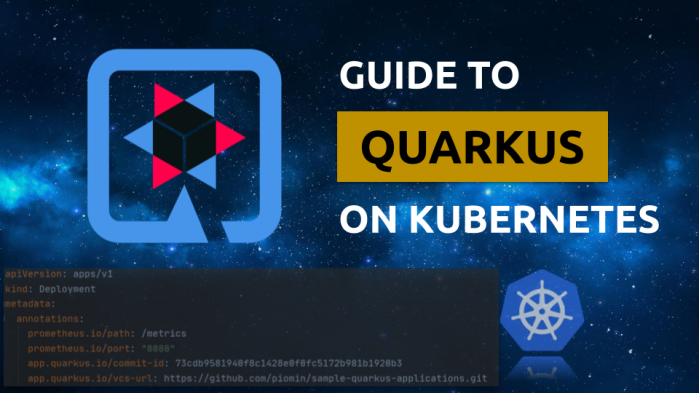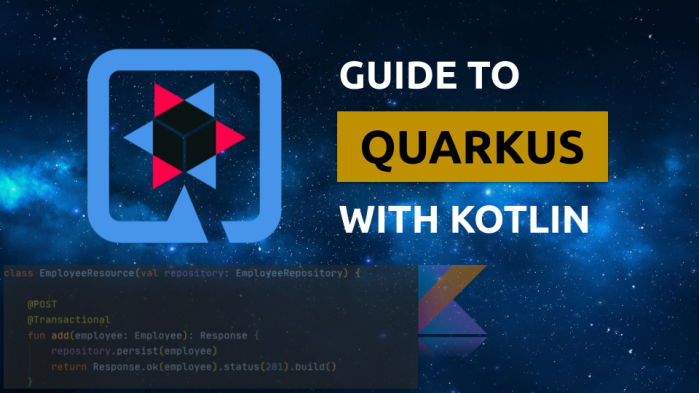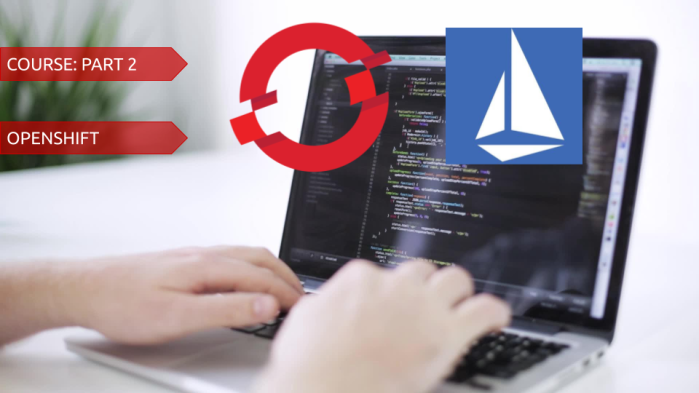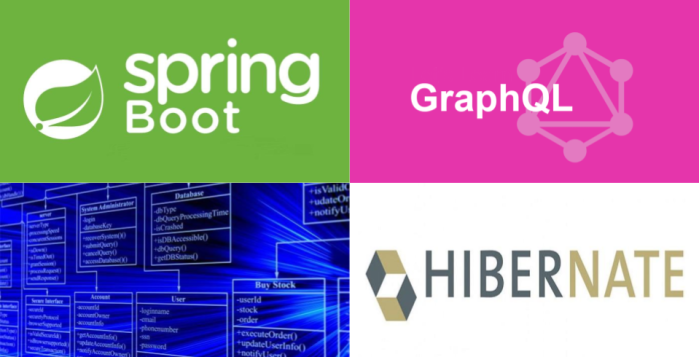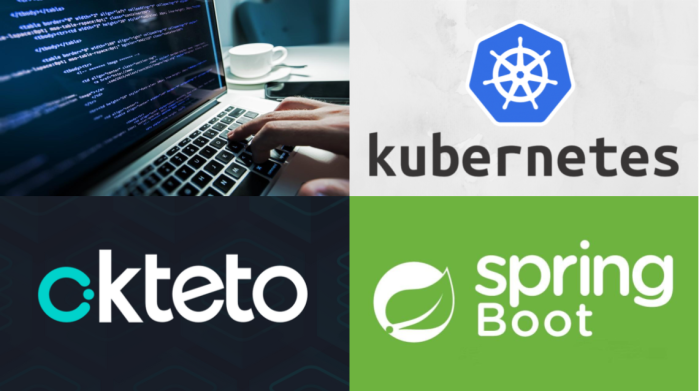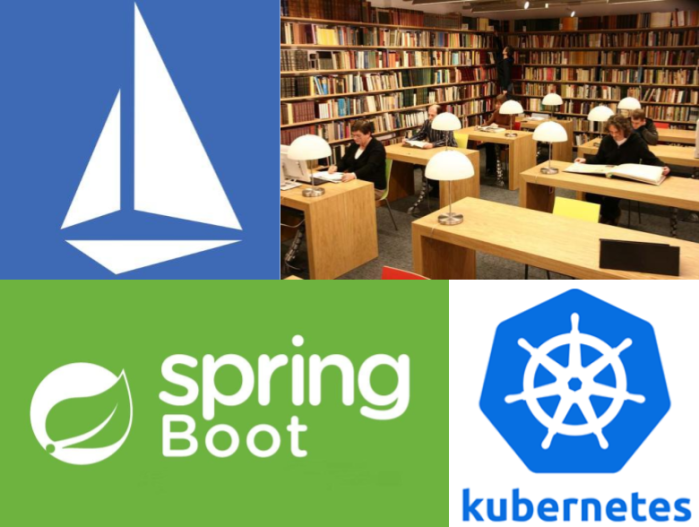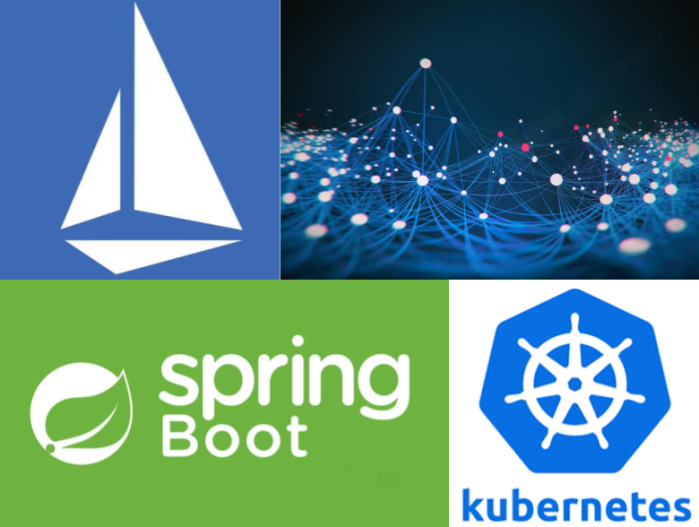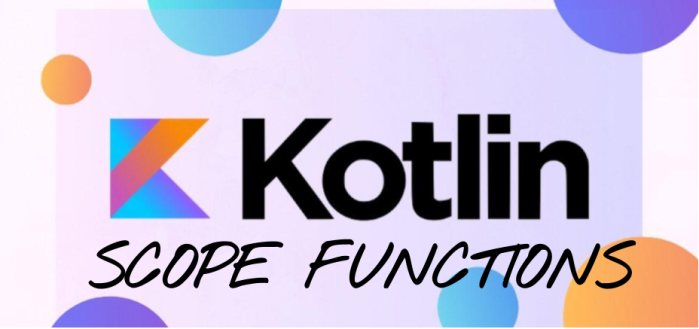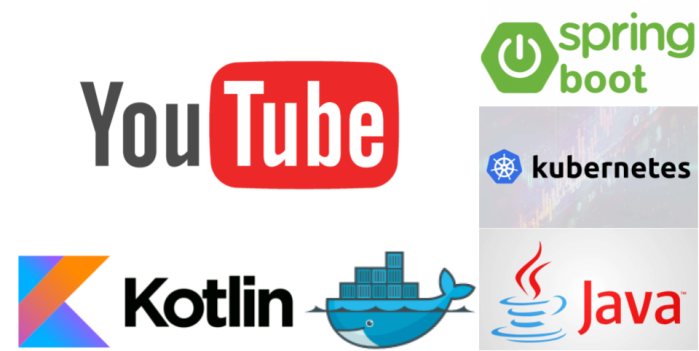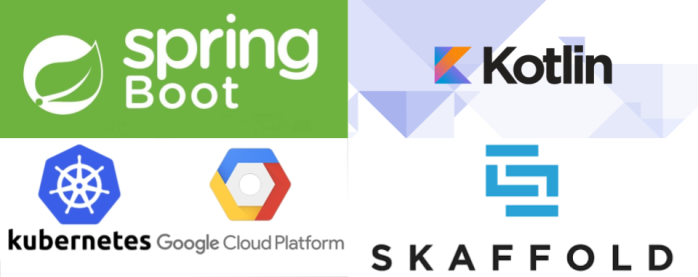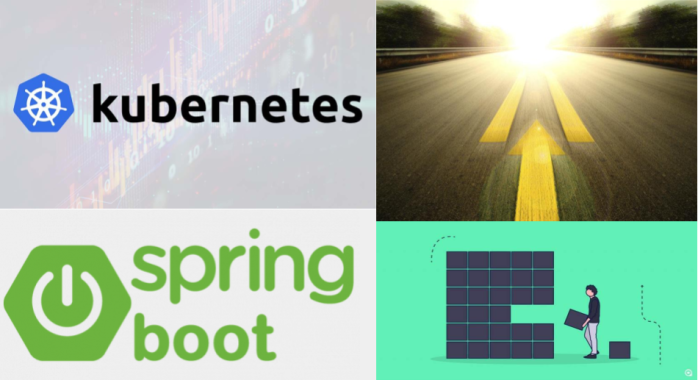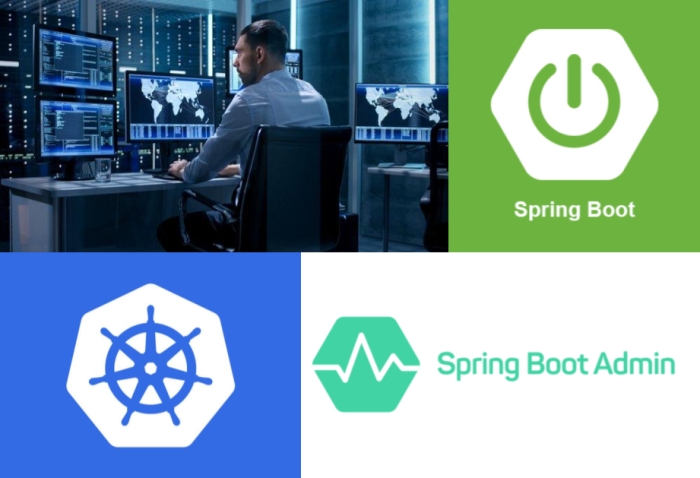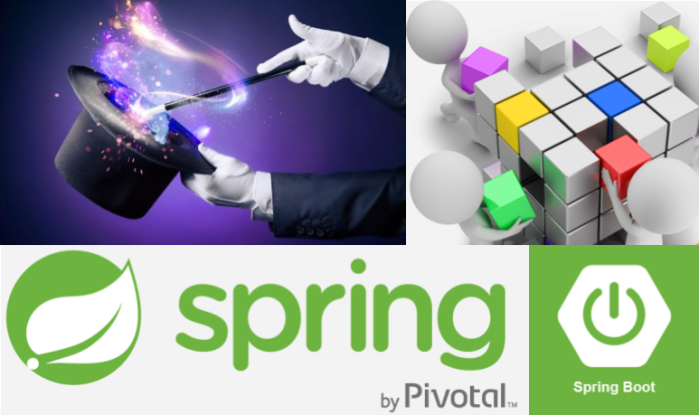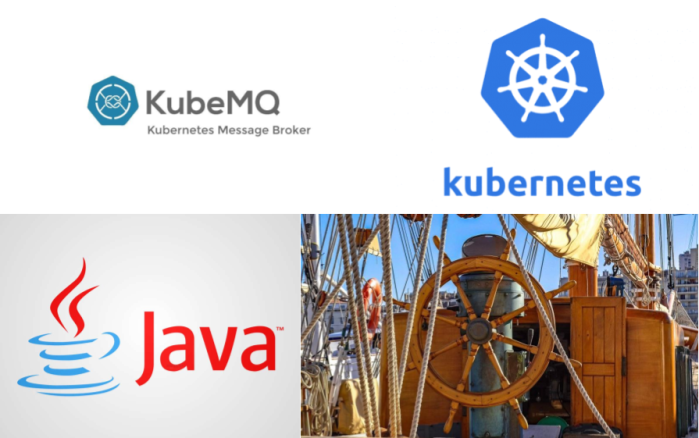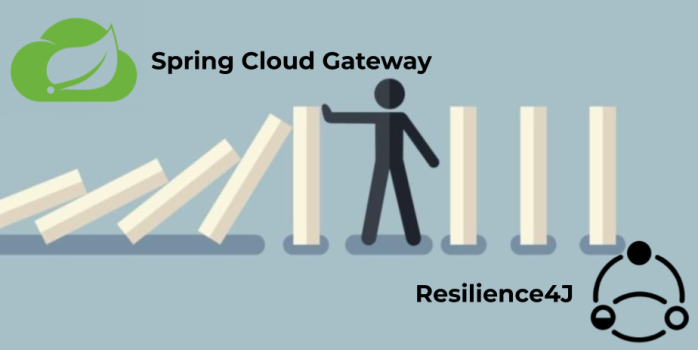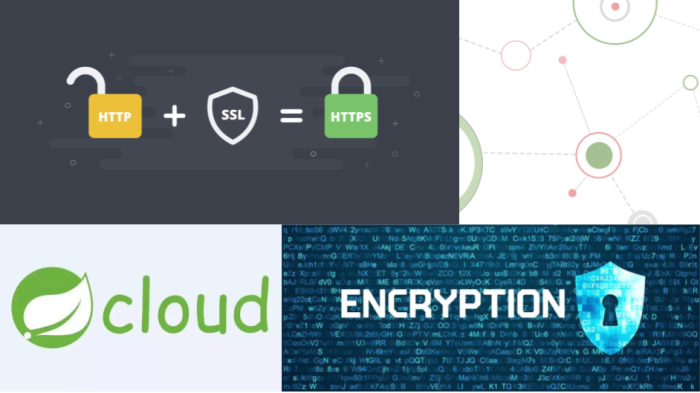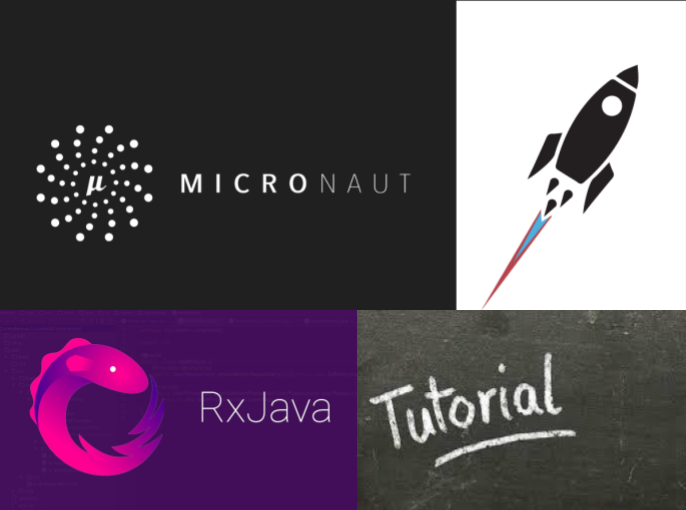Quarkus is a framework for building Java applications in times of microservices and serverless architectures. If you compare it with other frameworks like Spring Boot / Spring Cloud or Micronaut, the first difference is native support for running on Kubernetes or Openshift platforms. It is built on top of well-known Java standards like CDI, JAX-RS, and Eclipse MicroProfile which also distinguishes it from Spring Boot or Micronaut. Continue reading “Quick Guide to Microservices with Quarkus on Openshift”
Guide to Quarkus on Kubernetes
Quarkus is usually described as a Kubernetes-native Java framework. It allows us to automatically generate Kubernetes resources based on the defaults and user-provided configuration. It also provides an extension for building and pushing container images. Quarkus can create a container image and push it to a registry before deploying the application to the target platform. It also provides an extension that allows developers to use Kubernetes ConfigMap as a configuration source, without having to mount them into the pod. We may use fabric8 Kubernetes Client directly to interact with the cluster, for example during JUnit tests. Continue reading “Guide to Quarkus on Kubernetes”
Guide to Quarkus with Kotlin
Quarkus is a lightweight Java framework developed by RedHat. It is dedicated for cloud-native applications that require a small memory footprint and a fast startup time. Its programming model is built on top of proven standards like Eclipse MicroProfile. Recently it is growing in popularity. It may be considered as an alternative to Spring Boot framework, especially if you are running your applications on Kubernetes or OpenShift. Continue reading “Guide to Quarkus with Kotlin”
Intro to OpenShift Service Mesh
OpenShift 4 has introduced official support for service mesh based on Istio framework. This support is built on top of Maistra operator. Maistra is an opinionated distribution of Istio designed to work with Openshift. It combines Kiali, Jaeger, and Prometheus into a platform managed by the operator. The current version of OpenShift Service Mesh is 1.1.5. According to the documentation, this version of the service mesh supports Istio 1.4.8. Also, for creating this tutorial I was using OpenShift 4.4 installed on Azure. Continue reading “Intro to OpenShift Service Mesh”
Development on Kubernetes: Choose a platform
An important step before you begin the implementation of microservices is to choose the Kubernetes platform used for deploying your applications during development. In this article, I’m going to describe several available solutions. Continue reading “Development on Kubernetes: Choose a platform”
Guide to building Spring Boot library
In this article, I’m going to show you how to create and share your own custom Spring Boot library. If you decided to build such a product you should follow some best practices recommended by Spring Team. It’s a little bit more complicated than creating a plain Java library. Finally, you should publish your artifacts somewhere to share it with the community. Probably you need to obtain positive feedback from the community, so you should think about adding some extras. I’m also going to describe them. Let’s begin! Continue reading “Guide to building Spring Boot library”
Development on Kubernetes: IDE & Tools
An important step before you begin the implementation of microservices is to configure your development IDE and install a set of tools that simplifies integration with Kubernetes. In this article, I’m going to describe the most popular of those tools. Continue reading “Development on Kubernetes: IDE & Tools”
An Advanced Guide to GraphQL with Spring Boot
In this guide I’m going to discuss some more advanced topics related to GraphQL and databases, like filtering or relationship fetching. Of course, before proceeding to the more advanced issues I will take a moment to describe the basics – something you can found in many other articles. If you already had the opportunity to familiarize yourself with the concept over GraphQL you may have some questions. Probably one of them is: “Ok. It’s nice. But what if I would like to use GraphQL in the real application that connects to database and provides API for more advanced queries?”. If that is your main question, my current article is definitely for you. If you are thinking about using GraphQL in your microservices architecture you may also refer to my previous article GraphQL – The Future of Microservices?. Continue reading “An Advanced Guide to GraphQL with Spring Boot”
Kotlin Coroutines vs Java Threads
There are probably many articles about Kotlin coroutines online. That’s why I would like to focus just on showing you the difference between concept over coroutines and threads – a well-known concurrency mechanism in Java. We will start from a small portion of theory. Continue reading “Kotlin Coroutines vs Java Threads”
Distributed Transactions in Microservices with Spring Boot
When I’m talking about microservices with other people they are often asking me about approach to distributed transactions. My advice is always the same – try to completely avoid distributed transactions in your microservices architecture. It is a very complex process with a lot of moving parts that can fail. That’s why it does not fit to the nature of microservices-based systems.
Continue reading “Distributed Transactions in Microservices with Spring Boot”
Development on Kubernetes with Okteto and Spring Boot
Okteto Platform seems to be an interesting alternative to the another more popular tools that simplify development on Kubernetes. In comparison to the tools like Skaffold or Draft the idea around Okteto is to move development entirely to Kubernetes. What does it mean in practice? Let’s check it out. Continue reading “Development on Kubernetes with Okteto and Spring Boot”
Spring Boot Library for integration with Istio
In this article I’m going to present an annotation-based Spring Boot library for integration with Istio. The Spring Boot Istio library provides auto-configuration, so you don’t have to do anything more than including it to your dependencies to be able to use it. Continue reading “Spring Boot Library for integration with Istio”
Simplify development on Kubernetes with Dekorate, Skaffold and Spring Boot
Although Kubernetes is a great solution for managing containerized applications, scaling and automating deployment, a local development on it may be a painful experience. A typical workflow includes several steps like checking the functionality of the code locally, building and tagging a docker image, creating a deployment configuration and finally deploying everything on Kubernetes. In this article I’m going to show how to use some tools together to simplify that process. Continue reading “Simplify development on Kubernetes with Dekorate, Skaffold and Spring Boot”
Introduction to event-driven microservices with Spring Cloud Stream
Spring Cloud Stream framework allows to easily include well-known Spring patterns and best practices to applications while implementing event-driven microservices architecture. It uses Spring Integration project to provide connectivity to a message broker. It provides built-in support for such features like persistent publish-subscribe model, consumer grouping and partitioning. The integration with specific message broker solution is realized by binder implementations that are hidden behind middleware-neutral core. Continue reading “Introduction to event-driven microservices with Spring Cloud Stream”
Circuit breaker and retries on Kubernetes with Istio and Spring Boot
An ability to handle communication failures in an inter-service communication is an absolute necessity for every single service mesh framework. It includes handling of timeouts and HTTP error codes. In this article I’m going to show how to configure retry and circuit breaker mechanisms using Istio. The same as for the previous article about Istio Service mesh on Kubernetes with Istio and Spring Boot we will analyze a communication between two simple Spring Boot applications deployed on Kubernetes. But instead of very basic example we are going to discuss more advanced topics. Continue reading “Circuit breaker and retries on Kubernetes with Istio and Spring Boot”
Service mesh on Kubernetes with Istio and Spring Boot
Istio is currently the leading solution for building service mesh on Kubernetes. Thanks to Istio you can take control of a communication process between microservices. It also lets you to secure and observe your services. Spring Boot is still the most popular JVM framework for building microservice applications. In this article I’m going to show how to use both these tools to build applications and provide communication between them over HTTP on Kubernetes. Continue reading “Service mesh on Kubernetes with Istio and Spring Boot”
A Deep Dive Into Spring Cloud Load Balancer
Spring Cloud is currently on the verge of large changes. I have been writing about it in my previous article A New Era of Spring Cloud. While almost all of Spring Cloud Netflix components will be removed in the next release, it seems that the biggest change is a replacement of Ribbon client into Spring Cloud Load Balancer. Continue reading “A Deep Dive Into Spring Cloud Load Balancer”
A New Era Of Spring Cloud
Almost 1.5 years ago Spring Team has announced the decision of moving the most of Spring Cloud Netflix components into maintenance mode. It means that new features have no longer been added to these modules beginning from Greenwich Release Train. Currently, they are starting work on Ilford Release Train, which is removing such popular projects like Ribbon, Hystrix, or Zuul from Spring Cloud. The only module that will still be used is a Netflix discovery server — Eureka.
This change is significant for Spring Cloud since from beginning it was recognized by its integration with Netflix components. Moreover, Spring Cloud Netflix is still the most popular Spring Cloud project on GitHub (~4k stars). Continue reading “A New Era Of Spring Cloud”
Kotlin Scope Functions
Scope functions is one of the Kotlin feature I really like. When using such a function on an object, you are executing a block of code within the context of that object. You won’t find a similar feature in Java. There are five scope functions available in Kotlin: let, apply, run, with and also. In fact all of them is doing the same thing – execute a block of code on an object. However, there are some differences and we will discuss them on the simple example of code. Continue reading “Kotlin Scope Functions”
YouTube Channel Released!
My YouTube channel has been finally released! It is available here: https://www.youtube.com/channel/UCAieNgran7umupT_D50KaGw. I’m going to publish there tutorials and courses in the same subject matter as on my dev blog: Microservices, Containers, Spring Boot, Kubernetes etc.
Running Kotlin Microservice on Google Kubernetes Engine
In this article I’ll guide you through the steps required for building and running simple Kotlin microservice on Google Kubernetes Engine. We will use such and framework like Spring Boot, Skaffold and Jib. Continue reading “Running Kotlin Microservice on Google Kubernetes Engine”
A Deep Dive Into Spring WebFlux Threading Model
If you are building reactive applications with Spring WebFlux, typically you will use Reactor Netty as a default embedded server. Reactor Netty is currently one of the most popular asynchronous event-driven applications framework. It provides non-blocking and backpressure-ready TCP, HTTP, and UDP clients and servers. In fact, the most important difference between synchronous and reactive frameworks is in their threading and concurrency model. Without understanding how reactive framework handles threads, you won’t fully understand reactivity. Let’s take a closer look on the threading model realized by Spring WebFlux and Project Reactor. Continue reading “A Deep Dive Into Spring WebFlux Threading Model”
Kubernetes ConfigMap Versioning for Spring Boot Apps
Kubernetes doesn’t provide built-in support for ConfigMap or Secret versioning. Sometimes such a feature may be useful, when we are deciding to rollback current version of our application. In Kubernetes we are able to rollback just a version of Deployment without any additional configuration properties stored in ConfigMap or Secret. Continue reading “Kubernetes ConfigMap Versioning for Spring Boot Apps”
Using Spring Cloud Kubernetes External Library
In this article I’m going to introduce my newest library for registering Spring Boot applications running outside Kubernetes cluster. The motivation for creating this library has already been described in the details in my article Spring Cloud Kubernetes for Hybrid Microservices Architecture. Since Spring Cloud Kubernetes doesn’t implement registration in service registry in any way, and just delegates it to the platform, it will not provide many benefits to applications running outside Kubernetes cluster. To take an advantage of Spring Cloud Kubernetes Discovery you may just include library spring-cloud-kubernetes-discovery-ext-client to your Spring Boot application running externally. Continue reading “Using Spring Cloud Kubernetes External Library”
Best Practices For Microservices on Kubernetes
There are several best practices for building microservices architecture properly. You may find many articles about it online. One of them is my previous article Spring Boot Best Practices For Microservices. I focused there on the most important aspects that should be considered when running microservice applications built on top of Spring Boot on production. I didn’t assumed there any platform used for orchestration or management, but just a group of independent applications. In this article I’m going to extend the list of already introduced best practices with some new rules dedicated especially for microservices deployed on Kubernetes platform. Continue reading “Best Practices For Microservices on Kubernetes”
Timeouts and Retries In Spring Cloud Gateway
In this article I’m going to describe two features of Spring Cloud Gateway: retrying based on GatewayFilter pattern and timeouts based on a global configuration. In some previous articles in this series I have described rate limiting based on Redis, and circuit breaker built with Resilience4J. For more details about those two features you may refer to the following blog posts:
- Rate Limiting In Spring Cloud Gateway with Redis
- Circuit Breaking in Spring Cloud Gateway with Resilience4J
Continue reading “Timeouts and Retries In Spring Cloud Gateway”
Microservices API Documentation with Springdoc OpenAPI
I have already written about documentation for microservices more than two years ago in my article Microservices API Documentation with Swagger2. In that case I used project SpringFox for auto-generating Swagger documentation for Spring Boot applications. Since that time the SpringFox library is not being actively developed by the maintainers – the latest version has been released on June 2018. Currently, the most important problems with this library are a lack of support for OpenAPI in the newest version 3, and for Spring reactive APIs built using WebFlux. All these features are implemented by Springdoc OpenAPI library. Therefore, it may threaten as a replacement for SpringFox as Swagger and OpenAPI 3 generation tool for Spring Boot applications. Continue reading “Microservices API Documentation with Springdoc OpenAPI”
Spring Boot Admin on Kubernetes
The main goal of this article is to show how to monitor Spring Boot applications running on Kubernetes with Spring Boot Admin. I have already written about Spring Boot Admin more than two years ago in the article Monitoring Microservices With Spring Boot Admin. You can find there a detailed description of its main features. During this time some new features have been added. They have also changed a look of the application to more modern. But the principles of working have not been changes anymore, so you can still refer to my previous article to understand the main concept around Spring Boot Admin. Continue reading “Spring Boot Admin on Kubernetes”
Local Java Development on Kubernetes
There are many tools, which may simplify your local development on Kubernetes. For Java applications you may also take an advantage of integration between popular runtime frameworks and Kubernetes. In this article I’m going to present some of available solutions. Continue reading “Local Java Development on Kubernetes”
Hazelcast with Spring Boot on Kubernetes
Hazelcast is the leading in-memory data grid (IMDG) solution. The main idea behind IMDG is to distribute data across many nodes inside cluster. Therefore, it seems to be an ideal solution for running on a cloud platform like Kubernetes, where you can easily scale up or scale down a number of running instances. Since Hazelcast is written in Java you can easily integrate it with your Java application using standard libraries. Something what can also simplify a start with Hazelcast is Spring Boot. You may also use an unofficial library implementing Spring Repositories pattern for Hazelcast – Spring Data Hazelcast. Continue reading “Hazelcast with Spring Boot on Kubernetes”
A Magic Around Spring Boot Auto Configuration
Auto-configuration is probably one of the most important reasons you would decide to use such frameworks like Spring Boot. Thanks to that feature, it is usually enough just to include an additional library and override some configuration properties to successfully use it in your application. Spring provides an easy way to define auto-configuration using standard @Configuration classes. Continue reading “A Magic Around Spring Boot Auto Configuration”
Guide To Micronaut Kubernetes
Micronaut provides a library that eases development of applications deployed on Kubernetes or on a local single-node cluster like Minikube. The project Micronaut Kubernetes is relatively new in Micronaut family, its current release version is 1.0.3. It allows you to integrate Micronaut application with Kubernetes discovery, and use Micronaut Configuration Client to read Kubernetes ConfigMap and Secret as a property sources. Additionally it provides health check indicator based on communication with Kubernetes API. Continue reading “Guide To Micronaut Kubernetes”
Spring Cloud Kubernetes For Hybrid Microservices Architecture
You might use Spring Cloud Kubernetes to build applications running both inside and outside Kubernetes cluster. The only problem with starting application outside Kubernetes is that there is no auto-configured registration mechanism. Spring Cloud Kubernetes delegates registration to the platform, what is an obvious behaviour if you are deploying your application internally using Kubernetes objects. With external application the situation is different. In fact, you should guarantee registration by yourself on the application side. Continue reading “Spring Cloud Kubernetes For Hybrid Microservices Architecture”
Microservices With Spring Cloud Kubernetes
Spring Cloud and Kubernetes are the popular products applicable to various different use cases. However, when it comes to microservices architecture they are sometimes described as competitive solutions. They are both implementing popular patterns in microservices architecture like service discovery, distributed configuration, load balancing or circuit breaking. Of course, they are doing it differently. Continue reading “Microservices With Spring Cloud Kubernetes”
Circuit Breaking In Spring Cloud Gateway With Resilience4J
In the newest version of Spring Cloud Gateway (2.2.1) we may take an advantage of a new implementation of circuit breaker built on top of project Resilience4J (https://github.com/resilience4j/resilience4j). Resilience4J has been selected as a replacement for Netflix’s Hystrix, that had been moved to the maintenance mode. Of course, you can still use Hystrix as circuit breaker implementation, however it is deprecated and probably won’t be available in the future versions of Spring Cloud. A new implementation is called no different than just Spring Cloud Circuit Breaker. Continue reading “Circuit Breaking In Spring Cloud Gateway With Resilience4J”
Spring Boot Best Practices for Microservices
In this article I’m going to propose my list of “golden rules” for building Spring Boot applications, which are a part of microservices-based system. I’m basing on my experience in migrating monolithic SOAP applications running on JEE servers into REST-based small applications built on top of Spring Boot. This list of best practices assumes you are running many microservices on the production under a huge incoming traffic. Let’s begin. Continue reading “Spring Boot Best Practices for Microservices”
Secure Spring Cloud Config
If you are building microservices architecture on top of Spring Boot and Spring Cloud I’m almost sure that one of projects you are using is Spring Cloud Config. Spring Cloud Config is responsible for implementing one of the most popular microservices pattern called distributed configuration. It provides server-side (Spring Cloud Config Server) and client-side (Spring Cloud Config Server) support for externalized configuration in a distributed system. In this article I focus on security aspects related to that project. If you are interested in some basics please refer to my previous article about it Microservices Configuration With Spring Cloud Config. Continue reading “Secure Spring Cloud Config”
Rate Limiting In Spring Cloud Gateway With Redis
Currently Spring Cloud Gateway is second the most popular Spring Cloud project just after Spring Cloud Netflix (in terms of number of stars on GitHub). It has been created as a successor of Zuul proxy in Spring Cloud family. This project provides an API Gateway for microservices architecture, and is built on top of reactive Netty and Project Reactor. It is designed to provide a simple, but effective way to route to APIs and address such popular concerns as security, monitoring/metrics, and resiliency. Continue reading “Rate Limiting In Spring Cloud Gateway With Redis”
Micronaut Tutorial: Reactive
This is the fourth part of my tutorial to Micronaut Framework – created after a longer period of time. In this article I’m going to show you some examples of reactive programming on the server and client side. By default, Micronaut support to reactive APIs and streams is built on top of RxJava. Continue reading “Micronaut Tutorial: Reactive”

